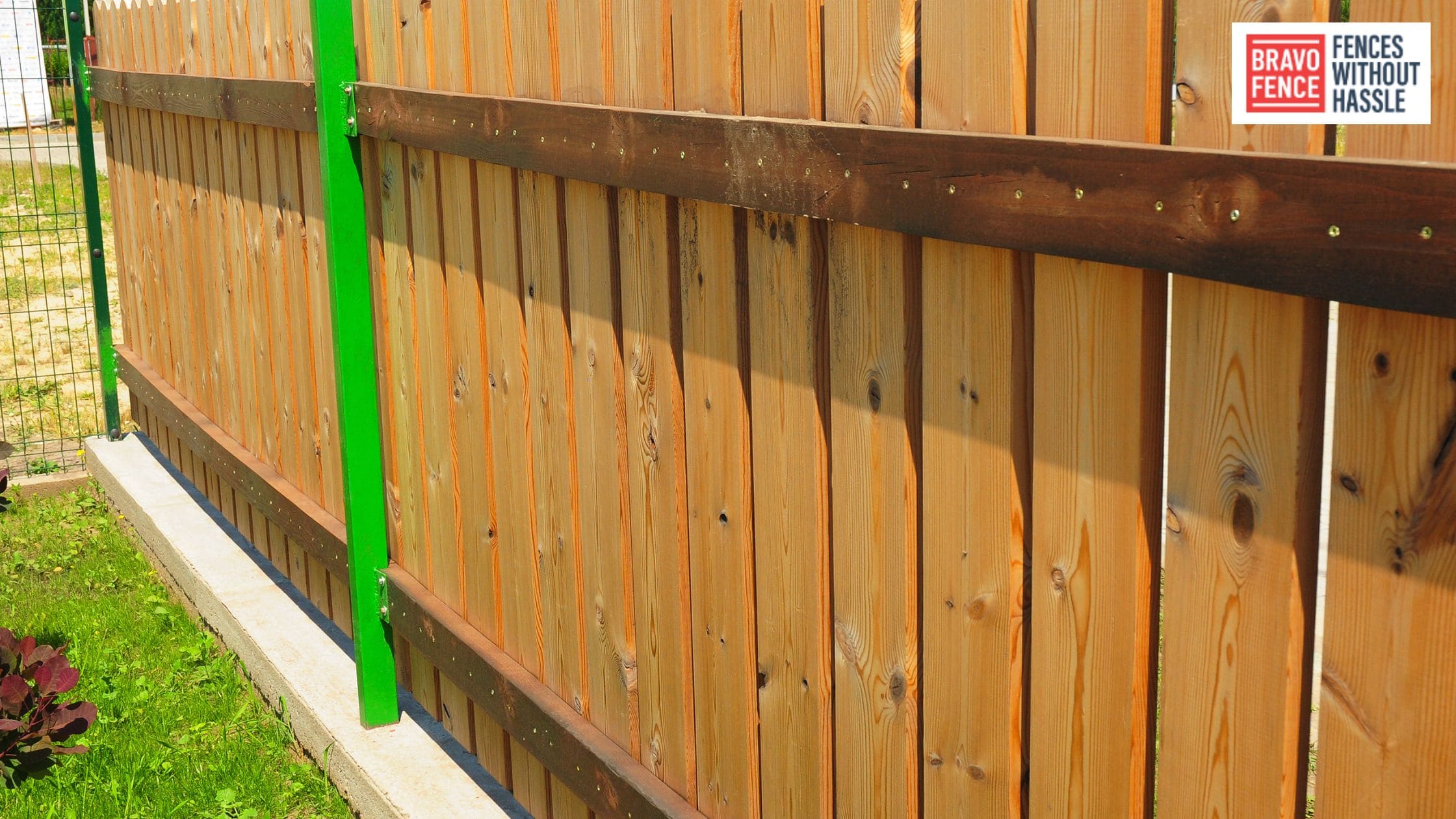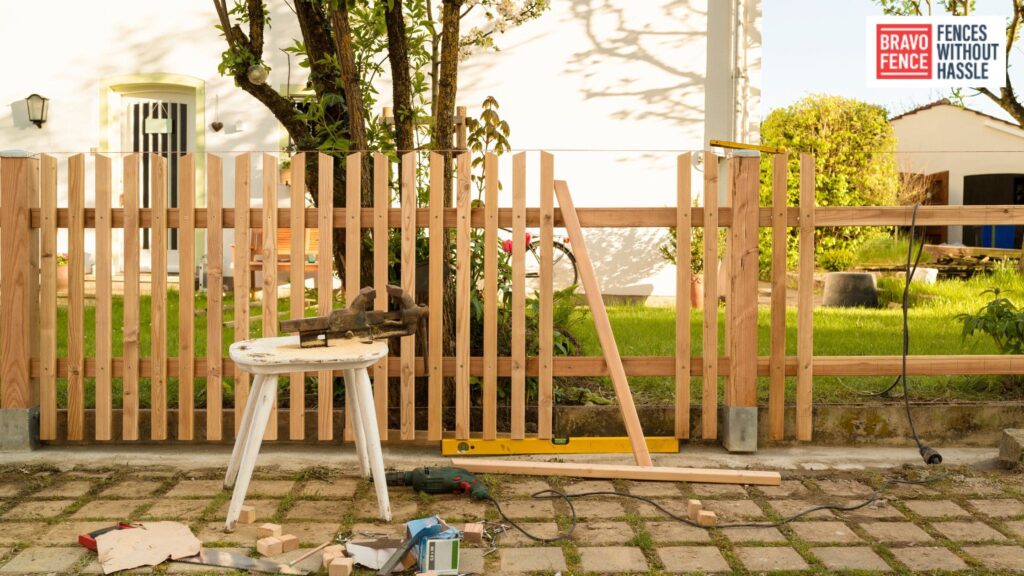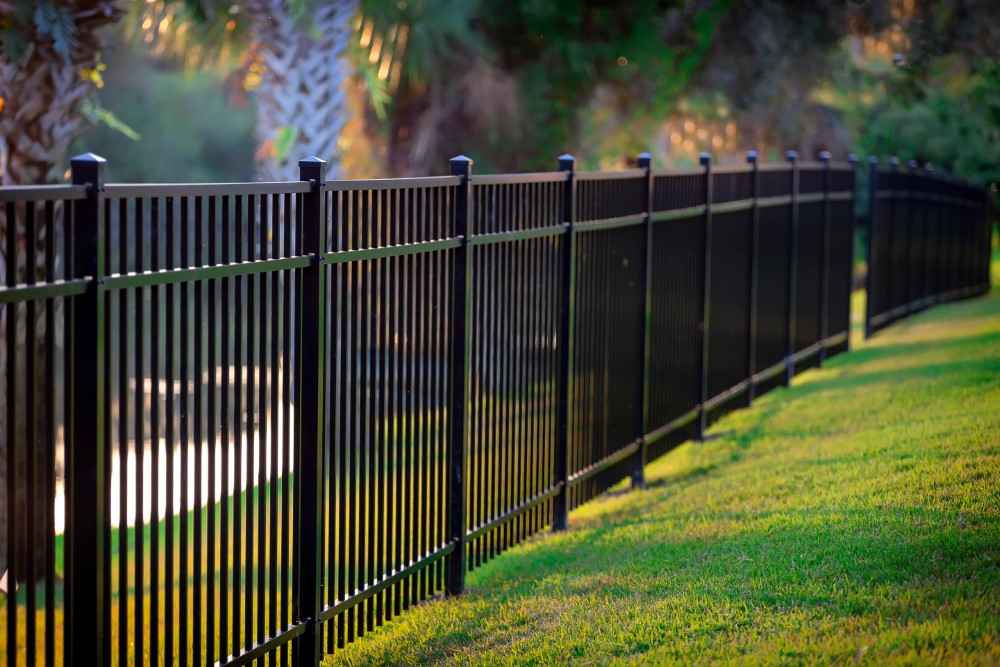
Maximize Wooden Fence Lifespan: Expert Tips & Maintenance
A wooden fence not only defines the boundary of your property but also adds charm and character to your home.
However, to ensure its longevity and maintain its aesthetic appeal, regular maintenance is crucial.
This article provides expert tips and strategies for maximizing the lifespan of your wooden fence, ensuring it remains a beautiful and functional part of your property for years to come.
Understanding the Challenges of Wooden Fences
Wooden fences are subject to various environmental stressors, including moisture, sunlight, and temperature fluctuations.
These factors can lead to problems such as rot, warping, and insect infestations.
Understanding these challenges will help you implement effective maintenance strategies to combat them.
Moisture: Water is one of the biggest threats to wooden fences.
Prolonged exposure to moisture can lead to wood rot, mold growth, and premature deterioration.
Rain, snow, and high humidity levels can all contribute to these issues.
Sunlight: UV rays from the sun can cause the wood to dry out, crack, and lose its natural color.
Over time, this exposure can weaken the wood and reduce its lifespan.
Temperature Fluctuations: Extreme temperatures, whether hot or cold, can cause wood to expand and contract, leading to warping, splitting, and other forms of damage.
Insects: Wood-boring insects, such as termites and carpenter ants, can cause significant damage to wooden fences.
They feed on the wood, leading to structural weaknesses and potential collapse.
Expert Tips for Maintaining Your Wooden Fence
Choose the Right Wood
The type of wood you choose for your fence can impact its durability and lifespan.
Hardwoods like cedar and redwood are naturally resistant to moisture and insects, making them a better choice for fence construction.
If you opt for softwoods like pine, ensure they are treated or stained to enhance their resistance to the elements.
Install Your Fence Properly

Proper installation is critical to extending the life of your wooden fence.
Ensure the posts are set deep enough in the ground, and use concrete for added stability.
Proper drainage around the base of the posts will help prevent water from accumulating and causing rot.
Apply a Protective Finish
Applying a protective finish to your wooden fence is one of the most effective ways to guard against moisture and UV damage. Options include:
Stains: Stains penetrate the wood and protect against moisture while enhancing its natural color. Choose a stain with UV blockers to protect against sunlight.
Sealants: Sealants create a barrier on the surface of the wood, preventing water from seeping in. They are instrumental in high-moisture areas.
Paint: Paint provides a durable barrier against moisture and UV rays. However, it can peel or crack over time, requiring regular touch-ups.
Regular Cleaning
Regular cleaning helps remove dirt, algae, and mold that can contribute to wood deterioration.
Use a mild detergent and water solution, and scrub the surface with a soft brush.
Avoid using high-pressure washers, as they can damage the wood.
Inspect for Damage
Conduct routine inspections of your wooden fence to identify any signs of damage early. Look for:
Rot: Soft or discolored areas of wood may indicate rot. Replace any affected boards as soon as possible to prevent the spread.
Warping and Cracking: Check for any warping or cracking in the wood. If you notice these issues, address them promptly to prevent further damage.
Insect Activity: Look for signs of insect infestation, such as small holes or sawdust. If you suspect an infestation, contact a pest control professional for treatment.
Trim Vegetation
Keep plants, shrubs, and trees away from your wooden fence. Overgrown vegetation can trap moisture against the wood, leading to rot and mold growth. Regularly trim back any vegetation that comes into contact with the wall.
Address Soil Erosion
Soil erosion can undermine the stability of your fence posts.
To prevent soil erosion, ensure proper grading and drainage around the base of the fence.
If you notice any shifting or leaning, adjust the posts and add additional support if necessary.
Reinforce Weak Areas
If you spot any weak or damaged areas in your fence, reinforce them as needed.
This might include replacing damaged boards, tightening loose screws or nails, or strengthening the posts with additional support.
Apply Insect Repellent
Insect repellents designed for wood can help protect your fence from wood-boring insects.
Look for products that are specifically formulated for this purpose and apply them according to the manufacturer’s instructions.
Prepare for Seasonal Changes
Different seasons can impact your fence in various ways. Prepare for seasonal changes by:
Winter: Ensure proper drainage to prevent ice and snow from accumulating around the base of the posts. Check for any signs of frost damage.
Summer: Protect against excessive UV exposure by reapplying stain or sealant as needed.
Advanced Maintenance Techniques
For those looking to go beyond essential maintenance, consider these advanced techniques:
Professional Inspection and Maintenance
Hire a professional to inspect and maintain your wooden fence periodically.
They can identify potential issues that may take time to be visible and provide expert advice on repairs and maintenance.
Fence Restoration
If your fence has become significantly weathered or damaged, consider a restoration project.
This might include sanding down the wood, applying a fresh coat of stain or paint, and replacing any damaged boards.
Upgrading to Composite Materials
For a more durable and low-maintenance option, consider upgrading to composite fencing materials.
These materials mimic the appearance of wood but are more resistant to weather, insects, and wear.
Conclusion
Maximizing the lifespan of your wooden fence requires regular maintenance and attention to detail.
By choosing suitable materials, applying protective finishes, conducting routine inspections, and addressing any issues promptly, you can ensure that your fence remains a beautiful and functional part of your property for many years to come.
Whether you are dealing with seasonal changes or seeking advanced maintenance techniques, the key is to be proactive and attentive to the needs of your wooden fence.
For expert advice and professional assistance, you can reach out to Bravo Fence Company.
FAQs
How often should I apply a protective finish to my wooden fence?
The frequency of applying a protective finish depends on the type of finish used and environmental conditions. Generally, it would help if you reapplied stains or sealants every 2-3 years. Paint may need touch-ups or a full recoat every 5-7 years, depending on exposure and wear.
What is the best type of wood for a fence?
Hardwoods like cedar and redwood are highly recommended due to their natural resistance to moisture and insects. If you choose softwoods like pine, ensure they are treated or stained to improve their durability.
How can I prevent moisture-related damage to my wooden fence?
To prevent moisture-related damage, apply a protective finish, ensure proper drainage around the fence posts, and avoid allowing vegetation to trap moisture against the wood. Regularly inspect and maintain the fence to address any issues promptly.
What are the signs that my wooden fence has insect damage?
Signs of insect damage include small holes in the wood, sawdust around the base of the fence, and weakened or crumbling wood. If you suspect an infestation, consult a pest control professional for treatment.
Can I use a high-pressure washer to clean my wooden fence?
It is not recommended to use a high-pressure washer on a wooden fence, as it can damage the wood and strip away protective finishes. Instead, use a mild detergent and water solution with a soft brush to clean the fence.
How can I address soil erosion around my fence posts?
To address soil erosion, ensure proper grading and drainage around the base of the posts. If erosion has already occurred, you may need to add additional support or adjust the posts to stabilize the fence.
What should I do if my wooden fence is warping or cracking?
If you notice warping or cracking, address these issues promptly to prevent further damage. This may involve replacing damaged boards, tightening loose screws or nails, or reinforcing the posts.
How can I prepare my wooden fence for winter?
Prepare your fence for winter by ensuring proper drainage to prevent ice and snow accumulation around the posts. Check for any signs of frost damage and address any issues before winter weather sets in.
What are the benefits of upgrading to composite fencing materials?
Composite fencing materials are more durable and low-maintenance compared to wood. They resist weathering and insects and wear better than traditional wood, and they mimic the appearance of wood without requiring regular refinishing.
How can I find professional help for fence maintenance and repairs?
For expert advice and professional assistance, consider reaching out to companies specializing in fence maintenance and repairs.
How can I prevent my wooden fence from developing mold or mildew?
To prevent mold or mildew growth on your wooden fence, ensure proper ventilation and avoid allowing moisture to accumulate. Regularly clean the wall with a mild detergent and water solution to remove any dirt or organic matter that could promote mold growth. Applying a protective finish with mold-resistant properties can also help.
Is it worth investing in a professional inspection for my wooden fence?
Yes, investing in a professional inspection can be beneficial. Professionals can identify potential issues that may not be immediately visible, such as hidden rot or insect infestations. They can also provide expert recommendations for maintenance and repairs, ensuring that your fence remains in optimal condition.
Tags: Explore Helpful Resources on Fence Lifespan, Explore Helpful Resources on Wood Fence Protection, Inspiration and Tips on Fence Preservation, Inspiration and Tips on Home Exterior Care, Inspiration and Tips on Weatherproofing Wood, Inspiration and Tips on Wooden Fence Maintenance
